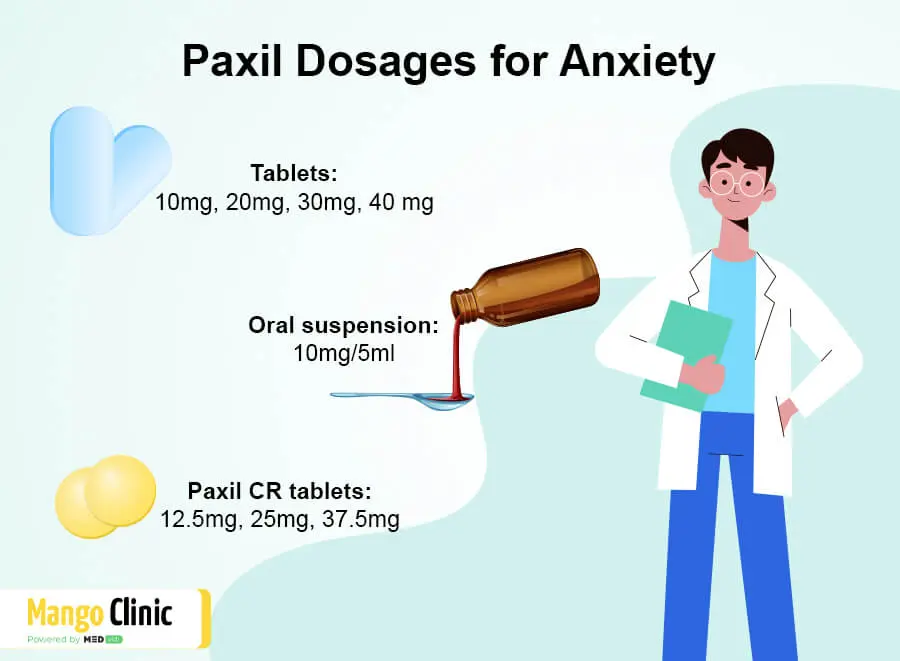Paxil, or paroxetine, frequently helps manage panic disorder symptoms. Studies show it’s effective for reducing panic attacks and associated anxiety. However, individual responses vary significantly. Dosage and treatment duration are crucial factors, determined by a healthcare professional based on your specific needs.
Expect potential side effects, including nausea, drowsiness, and sexual dysfunction. Open communication with your doctor is key; they can adjust your medication or suggest strategies to manage side effects. Regular check-ups monitor your progress and ensure the treatment remains appropriate.
Don’t hesitate to explore complementary therapies alongside Paxil, such as cognitive behavioral therapy (CBT). Many find that combining medication with therapy provides more comprehensive and lasting relief from panic disorder symptoms. Your doctor can help you find a qualified therapist and determine the best treatment plan for you.
Remember: This information is for educational purposes only and does not constitute medical advice. Always consult a healthcare professional before starting or altering any medication, especially given the complexities of panic disorder treatment. Your doctor will tailor a treatment approach to your individual circumstances and health history.
- Paxil and Panic Disorder
- Starting Paxil
- Managing Side Effects
- Therapy’s Role
- Long-Term Use and Discontinuation
- Finding the Right Dose
- Monitoring for Improvement
- Understanding Panic Disorder and its Symptoms
- Paxil’s Mechanism of Action in Treating Panic Disorder
- Efficacy and Effectiveness of Paxil for Panic Disorder
- Dosage and Response
- Potential Side Effects
- Alternatives and Considerations
- Long-Term Management
- Side Effects and Potential Risks Associated with Paxil Use
- Common Side Effects
- Less Common but Serious Side Effects
- Recommendations
- Disclaimer:
- Alternatives to Paxil and Considerations for Treatment
Paxil and Panic Disorder
Paxil, or paroxetine, is a selective serotonin reuptake inhibitor (SSRI) frequently prescribed for panic disorder. It works by increasing serotonin levels in the brain, helping regulate mood and reduce anxiety. Remember to consult your doctor before starting any medication, as it’s crucial to discuss potential side effects and drug interactions.
Starting Paxil
Your doctor will likely start you on a low dose and gradually increase it over several weeks to minimize side effects. Common initial side effects include nausea, drowsiness, and dizziness. These usually lessen as your body adjusts. Consistent medication adherence is key to experiencing benefits.
Managing Side Effects
Report any persistent or worsening side effects to your healthcare provider immediately. They can adjust your dosage or suggest strategies for managing side effects. For example, taking Paxil with food can help reduce nausea. Open communication with your doctor is vital.
Therapy’s Role
Paxil is often most effective when combined with therapy, such as cognitive behavioral therapy (CBT). CBT teaches coping mechanisms and helps you identify and manage triggers for panic attacks. This combined approach provides a holistic treatment strategy.
Long-Term Use and Discontinuation
Long-term use of Paxil is sometimes necessary to maintain stability. However, abruptly stopping Paxil can lead to withdrawal symptoms. Always discuss any medication changes with your doctor, who can help you taper off the medication safely and gradually.
Finding the Right Dose
Finding the optimal dosage can take time. Your doctor will monitor your progress and adjust your medication accordingly based on your response and any side effects. Be patient and work closely with your healthcare team.
Monitoring for Improvement
Regular check-ups with your doctor are important to track your progress and make necessary adjustments to your treatment plan. They’ll assess your symptoms and discuss any concerns you may have.
Understanding Panic Disorder and its Symptoms
Panic disorder involves unexpected and repeated panic attacks. These attacks aren’t triggered by a specific situation; they arise spontaneously.
Symptoms vary, but frequently include a racing heart, sweating, trembling, shortness of breath, chest pain, nausea, dizziness, and feelings of detachment or unreality (depersonalization/derealization). Intense fear of losing control or dying is also common.
Physical symptoms often mimic a heart attack, leading to considerable distress and anxiety about one’s health. This fear can, in turn, trigger further panic attacks, creating a difficult cycle.
Cognitive symptoms encompass overwhelming feelings of fear and impending doom. Individuals may experience intense worry about future panic attacks, significantly impacting their daily lives and potentially leading to avoidance behaviors.
The duration of a panic attack ranges from a few minutes to several hours. The frequency of attacks varies widely, from several per day to only a few per year.
Proper diagnosis involves a thorough evaluation by a healthcare professional to rule out other medical conditions. Treatment options include therapy, medication such as Paxil, or a combination of both. Early intervention is key to managing panic disorder and improving quality of life.
Paxil’s Mechanism of Action in Treating Panic Disorder
Paxil, or paroxetine, primarily works by selectively inhibiting the reuptake of serotonin in the brain. This means it increases the amount of serotonin available at the synapses, the connection points between nerve cells.
Increased serotonin activity impacts several areas relevant to panic disorder:
- Reduced Amygdala Activity: The amygdala is a brain region central to processing fear and anxiety. Paxil’s effect on serotonin helps dampen the amygdala’s overreaction to perceived threats, reducing the frequency and intensity of panic attacks.
- Improved Serotonergic Neurotransmission: Paxil modulates serotonin pathways implicated in mood regulation and emotional responses. This helps stabilize mood swings and decreases anxiety sensitivity.
- Enhanced GABAergic Activity (Indirectly): While not directly acting on GABA, Paxil’s serotonin-enhancing effects can indirectly influence GABA, a neurotransmitter that promotes relaxation and inhibits anxiety. This contributes to a calming effect.
It’s crucial to remember that Paxil’s impact is complex and not fully understood. However, the serotonin-related mechanisms described above are believed to be key to its efficacy in treating panic disorder. The exact response varies between individuals, highlighting the importance of personalized treatment plans and close monitoring.
Consider these points:
- Paxil takes several weeks to reach its full therapeutic effect.
- Dosage adjustments are common based on individual response.
- Combining Paxil with therapy often provides the best results.
Efficacy and Effectiveness of Paxil for Panic Disorder
Paxil (paroxetine) shows significant promise in treating panic disorder. Studies demonstrate its ability to reduce the frequency and severity of panic attacks. A meta-analysis of numerous clinical trials revealed a substantial improvement in symptoms for patients using Paxil compared to placebo groups.
Dosage and Response
Typical starting dosages range from 10 to 20 mg daily, with gradual increases as needed, under a doctor’s supervision. Individual responses vary; some people experience relief within a few weeks, while others may need several months to achieve optimal results. Regular monitoring and open communication with your psychiatrist are key to finding the right dose and managing side effects.
Potential Side Effects
Common side effects include nausea, drowsiness, weight changes, and sexual dysfunction. These are often mild and tend to lessen over time. However, serious side effects are rare. Always discuss any concerns with your prescribing physician; they can help you manage side effects and determine if Paxil is the right medication for you.
Alternatives and Considerations
Paxil is not the sole treatment option for panic disorder. Cognitive behavioral therapy (CBT) often complements medication, providing long-term coping mechanisms. Your doctor might recommend a combination approach tailored to your specific needs. Remember to fully discuss your medical history, including other medications you take, with your healthcare provider before starting any new treatment.
Long-Term Management
Maintaining a consistent treatment plan is critical for managing panic disorder. Abruptly stopping Paxil can lead to withdrawal symptoms. Gradually tapering off the medication under your doctor’s guidance is crucial to minimizing any discomfort. Continued therapy and lifestyle adjustments may be necessary to prevent relapse.
Side Effects and Potential Risks Associated with Paxil Use
Paxil, like all medications, carries potential side effects. Understanding these is key to informed decision-making. Many side effects are mild and temporary, but some can be more serious.
Common Side Effects
- Nausea: This is a frequently reported side effect. Try taking Paxil with food to mitigate this.
- Drowsiness: Avoid driving or operating machinery until you know how Paxil affects you.
- Weight changes: Some individuals experience weight gain or loss. Maintain a healthy diet and exercise routine.
- Sexual dysfunction: Changes in libido or difficulty achieving orgasm are possible. Discuss this with your doctor; there may be management strategies.
- Headache: These are usually mild and subside as your body adjusts.
- Insomnia or sleep disturbances: Maintaining a consistent sleep schedule can help.
Less Common but Serious Side Effects
While less frequent, certain serious side effects necessitate immediate medical attention:
- Serotonin syndrome: Symptoms include high fever, agitation, muscle rigidity, and rapid heart rate. Seek immediate medical help if you experience these.
- Withdrawal symptoms: Abruptly stopping Paxil can lead to withdrawal symptoms such as dizziness, nausea, anxiety, and flu-like symptoms. Always taper off Paxil under your doctor’s guidance.
- Increased suicidal thoughts: Although rare, some individuals experience increased suicidal thoughts, particularly during initial treatment. Close monitoring is important, especially in younger patients.
- Bleeding risk: Paxil may increase the risk of bleeding. Inform your doctor about any bleeding disorders or medications that affect blood clotting.
Recommendations
Open communication with your doctor is crucial. Report any side effects, even if they seem minor. Your doctor can adjust your dosage or suggest alternative treatments if necessary. Never stop taking Paxil abruptly; always follow your doctor’s instructions for tapering off the medication. Regular check-ups help monitor your progress and address any concerns promptly.
Disclaimer:
This information is for educational purposes only and should not be considered medical advice. Always consult with your healthcare provider before starting or stopping any medication.
Alternatives to Paxil and Considerations for Treatment
Explore therapy options like Cognitive Behavioral Therapy (CBT) and Exposure Therapy. CBT helps you identify and change negative thought patterns contributing to panic. Exposure Therapy gradually confronts you with feared situations, reducing anxiety over time.
Other medications offer different mechanisms of action. Sertraline (Zoloft), a similar SSRI, might be a suitable alternative. Consider SNRI medications like venlafaxine (Effexor) or duloxetine (Cymbalta), which affect different neurotransmitters. Buspirone (Buspar), a non-benzodiazepine anxiolytic, provides anxiety relief without the sedative effects often associated with benzodiazepines.
Lifestyle changes significantly impact panic disorder management. Regular exercise reduces stress hormones, improving mood. Mindfulness techniques like meditation and deep breathing exercises calm the nervous system. Prioritize adequate sleep; consistent sleep schedules are critical.
| Medication Type | Example Medication | Mechanism of Action |
|---|---|---|
| SSRI | Sertraline (Zoloft) | Increases serotonin levels |
| SNRI | Venlafaxine (Effexor) | Increases serotonin and norepinephrine levels |
| Anxiolytic | Buspirone (Buspar) | Affects serotonin and dopamine receptors |
A psychiatrist can help determine the best treatment strategy based on your individual needs and medical history. They will assess your symptoms, consider potential drug interactions, and monitor your progress. Open communication with your doctor is vital for optimal results. Remember, finding the right treatment may involve trial and error.






